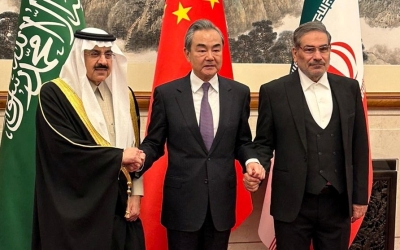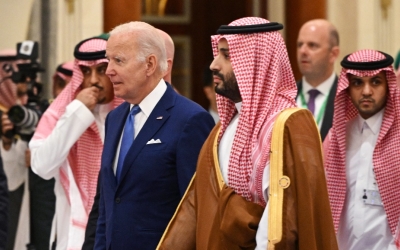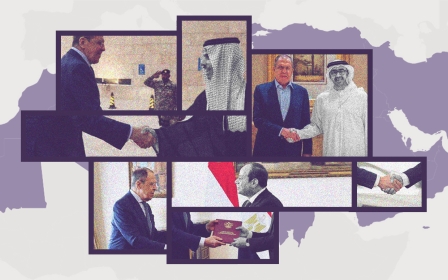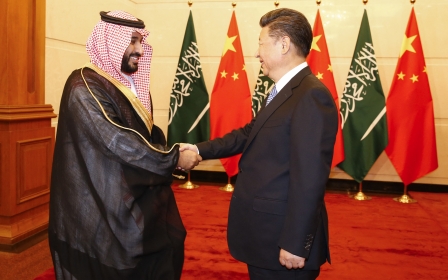China, Russia and Iran launch joint military exercises in Gulf of Oman

China, Russia and Iran are holding joint military exercises in the Gulf of Oman, the Russian and Chinese defence ministries announced on Wednesday.
The exercises, which will last from Wednesday to Sunday, aim to enhance the respective militaries' abilities to conduct "joint maneuvers” and daytime and night-time artillery firing, according to the Russian military. The navies are also training on liberating captured ships and assistance to vessels in distress.
The drills come days after China brokered a surprise reconciliation agreement between Iran and Saudi Arabia, setting the stage for restored diplomatic ties between the two foes and enhancing Beijing’s clout in the Middle East.
While Washington said it supports efforts to de-escalate tensions between Saudi Arabia and Iran, it has tried to downplay China’s role in the talks.
On Monday, State Department spokesperson Ned Price said the breakthrough “was not about the PRC [People's Republic of China]. This was about what Iran and the Kingdom of Saudi Arabia committed to.”
As part of the exercises, China dispatched its guided missile destroyer - the Nanning. The three countries conducted similar drills in 2019 and 2022.
China has become the Middle East’s largest buyer of oil, but the US continues to dominate the security architecture of the Middle East.
Speaking to CNN on Wednesday, US National Security Council spokesperson John Kirby said the US would watch the exercises, but was not alarmed.
“We’ll monitor it, obviously, to make sure that there’s no threat resulting from this training exercise to our national security interests or those of our allies and partners in the region. But nations train. We do it all the time. We’ll watch it as best we can.”
'Blue water navy'
The drills come as Washington wraps up its own massive military exercise in the region with more than 50 partner nations, spanning from the Arabian Gulf to the Red Sea and the Indian Ocean.
Douglas Silliman, a former US ambassador to Kuwait and Iraq, previously told MEE that China was nowhere near supplanting the US as the region’s premier security provider, despite its recent diplomatic win.
"China doesn't have a blue water navy," Silliman said, referring to a maritime force that can operate far from home. "It doesn’t have US readiness posture or prepositioned troops. The US Navy still oversees the security of China’s oil flows.”
Still, Beijing has been upping its military involvement in the Gulf. China and Saudi Arabia have agreed to a plan to jointly develop drones in the kingdom. Meanwhile, the UAE’s talks with Washington to acquire the F-35 fighter jets broke down over a dispute about the UAE's ties to Beijing. In 2021, the Wall Street Journal reported the US suspected China was building a military facility at a port in the UAE.
Russia’s participation in the drills also underlines how the Middle East is frustrating the US’s goal of isolating Moscow over its Ukraine invasion.
Iran has supplied Russia with armed drones. Vladimir Putin's first trip outside the former Soviet Union since invading Ukraine was to Iran.
Putin has promised to accelerate Iran's bid to join the Shanghai Cooperation Organisation (SCO), a central Asian security bloc designed as a counterweight to western influence in Eurasia.
Middle East Eye propose une couverture et une analyse indépendantes et incomparables du Moyen-Orient, de l’Afrique du Nord et d’autres régions du monde. Pour en savoir plus sur la reprise de ce contenu et les frais qui s’appliquent, veuillez remplir ce formulaire [en anglais]. Pour en savoir plus sur MEE, cliquez ici [en anglais].






